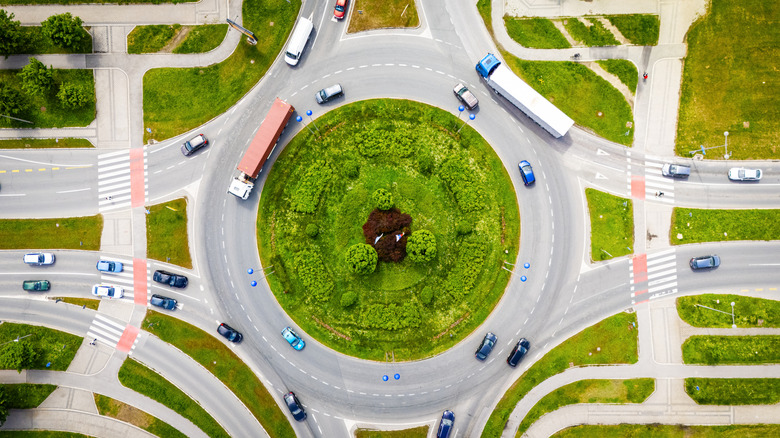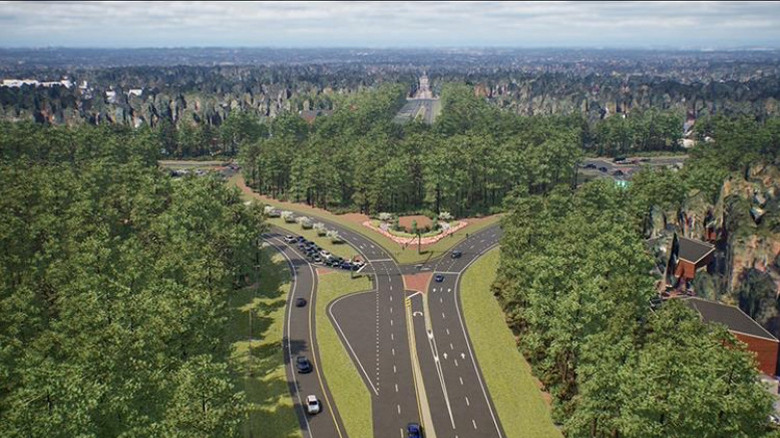This North Carolina Traffic Circle Causes So Many Accidents, It's Getting A Makeover
Traffic circles, also known as roundabouts, are meant to improve both traffic flow and safety at busy intersections. They're much more common in other parts of the world, especially Europe, than they are in the U.S. Recently, urban designers have even started to implement turbo roundabouts and are moving away from traffic lights altogether. Despite the presence of the roundabout in other parts of the world, however, many Americans dislike them. Some find them confusing, while others may simply not have had much experience with them. One community in North Carolina, however, feels so strongly about its traffic circle that it has fought for a redesign.
Roundabouts were relatively rare in the U.S. until the 1990s, when they began to pop up as road designers found (and traffic studies proved) that they are often safer than the traditional four-way intersection. Now just one second, you may say: What about Columbus Circle in New York City, which has been confusing drivers since 1905? That's actually termed a rotary, which is an older form of traffic circle that gave them a bad name because they allow traffic to enter at high speeds and generally cause headaches for all.
The Pinehurst Traffic Circle in Moore County, North Carolina has similarly been troublesome in recent years. Constructed in 1956, this roundabout is the meeting point of five roads, rather than the more traditional four that you see in many modern traffic circles. It sees about 50,000 cars every day, and it's notorious for accidents and backed-up traffic. The North Carolina Department of Transportation (NCDOT) has a plan to simplify the intersection, but not all residents have been happy with the proposed changes.
What the Pinehurst Traffic Circle redesign entails
NCDOT spent more than 10 years studying the PineHurst Traffic Circle to determine the best way to alleviate some of its issues. Part of the problem was that many residents didn't want the agency to cut down the trees that dominate the center of the circle in the redesign. In late October 2025, the agency hosted a community meeting to hear input on its proposed changes and find a solution.
The new design takes the five-spoke circle and turns it into three traffic signal-controlled junctions. Elements of the circle would be maintained, and the intent of the changes is to improve traffic flow and safety while still maintaining the charm that locals so appreciate. In 2024, when NCDOT proposed replacing the circle entirely with a new intersection that would oust seven homes and businesses, nearby residents posted signs reading, "Improve, Don't Destroy Our Circle!" The new plan preserves more of the original format, adding a six-lane road and removing some trees, but not displacing any existing structures.
It's clear, to NCDOT at least, that something must be done. Traffic through the circle is expected to increase to 80,000 cars per day by 2050, and there's a crash about once every two days. The majority of these accidents are not fatal but have caused about $31 million in property damage. The agency is accepting comments on the design through November 12, 2025, and construction is expected to begin in 2031.

